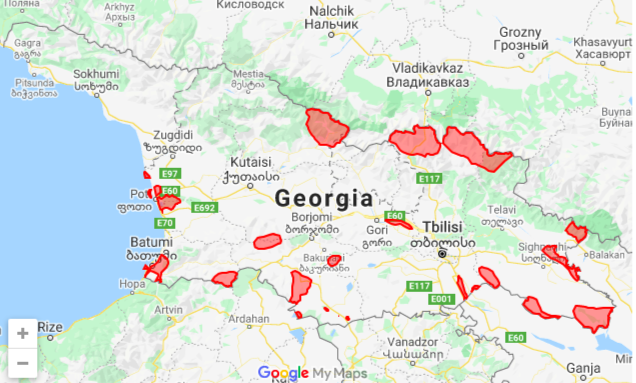Browse by taxonomy
Simple search by name
Melanitta fusca
Taxon: Melanitta fuscaAuthor: Nika Paposhvili
Uploaded by: Nika Paposhvili
Download full size image 1651 X 1101
Name According To: http://datazone.birdlife.org/species/taxonomy
Species: fusca
Taxon Rank: Species
Scientific Name Authorship: Linnaeus, 1758
Vernacular Name: Velvet Scoter
Georgian Name: თეთრფრთიანი გარიელი
GBD Remarks:
The populations of Velvet Scoter (Melanitta fusca) is decreasing worldwide and the species is classified as Vulnerable by IUCN and included on The Red List of Georgia as Endangered. Within the Western Palearctic two populations are recognized: large population of northern Europe and western Russia and the small, isolated population in Georgia, Turkey and Armenia. Not long ago the breeding area of Velvet Scoter included several lakes of Javakheti plateau (Saghamo, Paravani, Khanchali, Kartsakhi and Tabatskuri), South Georgia. However, breeding area of Velvet Scoter is critically reduced and currently the species only remains in Tabatskuri Lake.
Tabatskuri Lake is located in Samtskhe-Javakheti region, Georgia. 2000 meters from sea level. The Surface area - 14.2 Km2. The average depth is 15 m. There is a small island, which is breeding place for Velvet Scoter.
The Tabatskuri lake is recognized as an important bird area by the Birdlife International.
IDENTIFICATION
The length of the Velvet Scoter body is about 51 - 58 cm from the tip of the nail to the end of the tail. Wingspan: 79 - 97 cm Weight: 1.3 - 1.9 kg. The male is biger then female. Male (definitive basic): All-black plumage, except the wing (secondaries white) and head, which has a white patch that surrounds the eye. Iris whitish to pale blue-grey. Bill-sides largely bright yellow, nail ivory, periphery of nostrils, upper culmen and tomium are black. Legs are reddish. Female (definitive basic): Similar to male, but browner and duller. Head lacks white patch, but there are two diffuse pale areas, at the bill base and on the ear coverts. Iris dark brown. Bill dark grey. Juvenile is very similar to female. Habitat: Shores, freshvater lakes, ponds and large rivers in the taiga. Lakes in the subalpine zone of the Caucasus. Food: Molluscs and crustaceans are the most common food. Nests on the ground close to water, and hidden by brush. Breeding starts in June. Clutch size is normally 7 – 10 eggs. Incubation: 25 – 30 days. Fledging: 50 – 60 days. Maturity: 2 – 3 years. Lifespan: 7 – 8 years
Page Authors: Nika Paposhvili ,
Conservation Status
This section is under construction
National Red List Status of have not been evaluated

